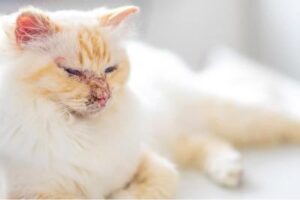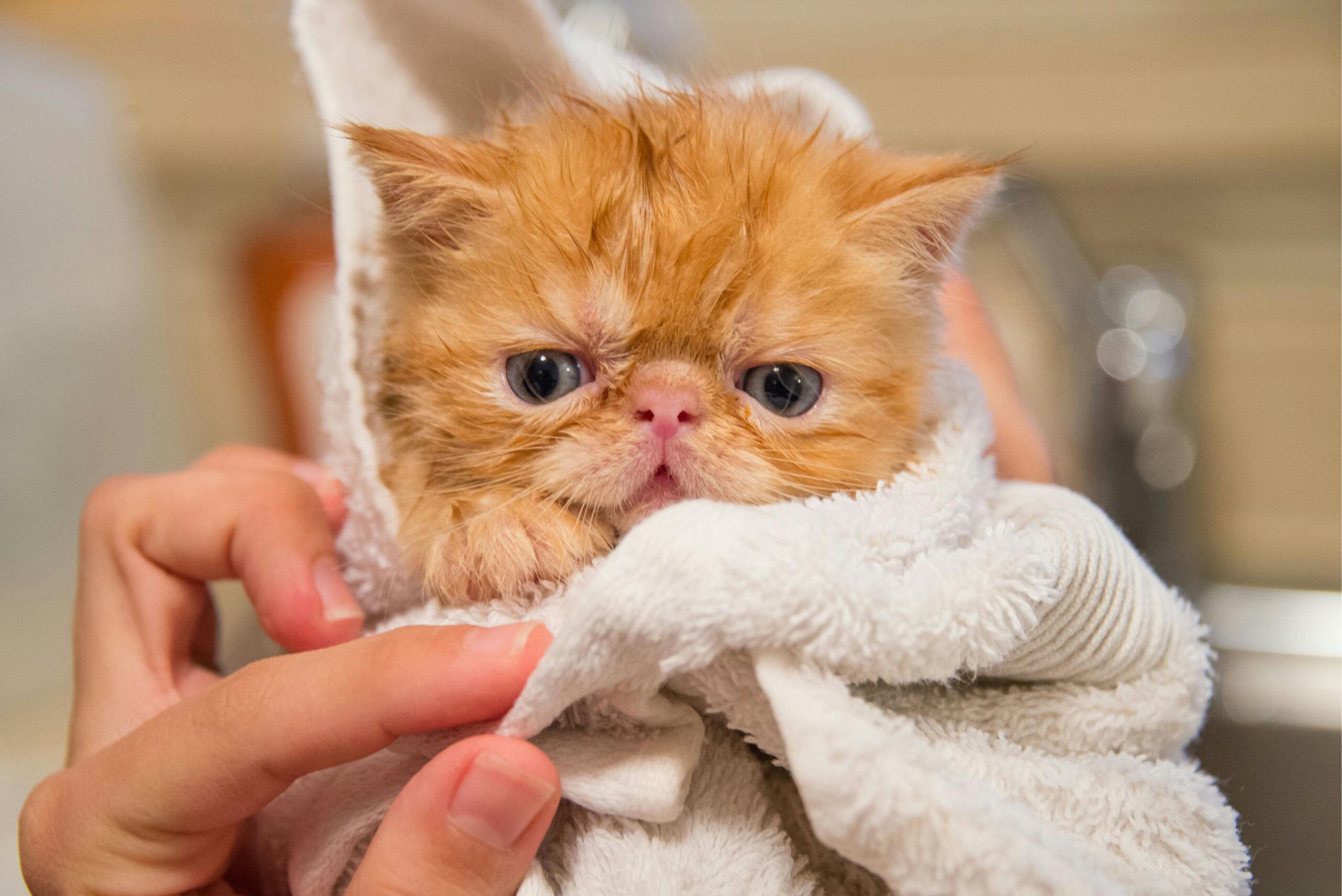Introduction
Itching and deep swelling could cause severe pain in felines with skin disorders. Finding the root cause of skin diseases in kittens is crucial to starting the proper medication. Let’s talk about the most prevalent skin diseases in cats, warning signs to look out for, and various treatments for afflicted cats.
Top 10 common cat diseases regarding skin:
While many other skin disorders affect felines, let’s quickly review ten more prevalent ones.
Flea Allergy Dermatitis:
Such inflammatory disease, brought on by a reaction to flea bites, results in red spots on the skin’s surface, severe irritation, and hair loss. The tail base, chin, and head are the areas that are often impacted.
Inflammatory dermatitis:
Crusty, itchy skin and diminished hair growth are common symptoms of dietary or ecological allergic reactions, and they typically affect the ears, groin, back, and abdomen.
Cat acne:
This disorder is caused by clogged hair follicles, which lead to microscopic blisters or blackheads within the impacted areas. It mainly affects the area under the chin.

Superficial Pyoderma:
It is caused by a yeast or bacterial invasion of the dermis; surface pyoderma results in tiny, itchy pimples and crusty, discoloured skin. Although such illness could occur anywhere over one’s body, it typically appears on the forehead, within the groin, and the soles of the paws.
Ringworm:
It’s an infection caused by fungi in kittens that results in skin irritation and hair loss within circular sections. The ears and the face are particularly susceptible, although any region of the body might be.
Abscess:
An infected injury could result from a cat bite or other stressful incident. A pus-filled infected injury has the potential to become an abscess, which a medical professional might need to extract from a feline.
Dry skin:
Diet deficiencies, anxiety, and deeper medical conditions could cause dry skin, frequently resulting in flakes resembling dandruff.
Granuloma eosinophilic:
Raw, wound-like skin without hair and irritating plaques (the regions of red, elevated skin) are the symptoms of such aggressive illness. Lesions could appear on your thighs and tummy, although they usually affect the lips and mouth.
Abnormal Growths:
Cats are susceptible to developing various skin abnormalities, from lesions to cancer.
Foliaceus Pemphigus:
Cats with such autoimmune diseases get blisters and sores spread across their bodies. The ears, nose, face, feet and belly are among the areas that are frequently impacted.

Reasons for Skin Diseases In Kittens:
The Kittens skin diseases could be brought on by a wide range of difficulties, from small ones like improper brushing to far more grave ones like infections. Every root reason has a distinct set of signs and calls for an alternate action plan. The following are the most typical root causes of skin disorders in kittens:
- Parasites like lice, mites, fleas, or ticks
- Infections, which are mainly brought on by yeast and bacteria
- Ringworm
- Sensitivities to food
- Allergies to the environment
- inadequate dietary intake
- Poor personal appearance
- Behavioural disorders like tension or anxiety
- Trauma, like a wound or cat bite
- uncontrolled growth of cells, as in tumours
- hyperactive immune response
- Additional underlying medical issues, like diabetes
Signs of Skin Disorders in Felines:
According to the root cause of the problem, feline skin issues could present with a variety of signs, which might involve the following:
- Itching
- hair thinning
- little, elevated lumps
- Bruised, red skin
- wound-like or dry skin
- Open wounds that might or might not have pus in them
- Skin tone shift (dark-brown patches)
- Itchy, irritated ears
- Rough skin
- Overindulgence in upkeep
- lumps

Skin disorders can cause discomfort, lethargy, loss of appetite, and diminished love in kittens.
Therapy for Skin Diseases In Kittens:
The fundamental root of Skin Diseases In Kittens issue determines the course of treatments. Treatment might involve topical or oral antibiotics, fungicides, allergy medications, steroid injections and immunomodulating medicines. Bravecto® Plus is an effective flea and bites preventative to cure skin parasitic infections. A prescription-only hypoallergenic food is given to felines who have food sensitivities. EicosaDermTM and other omega-3 tablets are helpful for kittens with chapped skin. For cats that groom themselves compulsively because they are experiencing deep anxiety or stress, pheromone treatments such as Feliway and other specific medications such as fluoxetine may be helpful. Occasionally, substantial malignant masses impairing a cat’s movement might require surgery.

